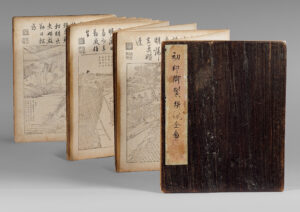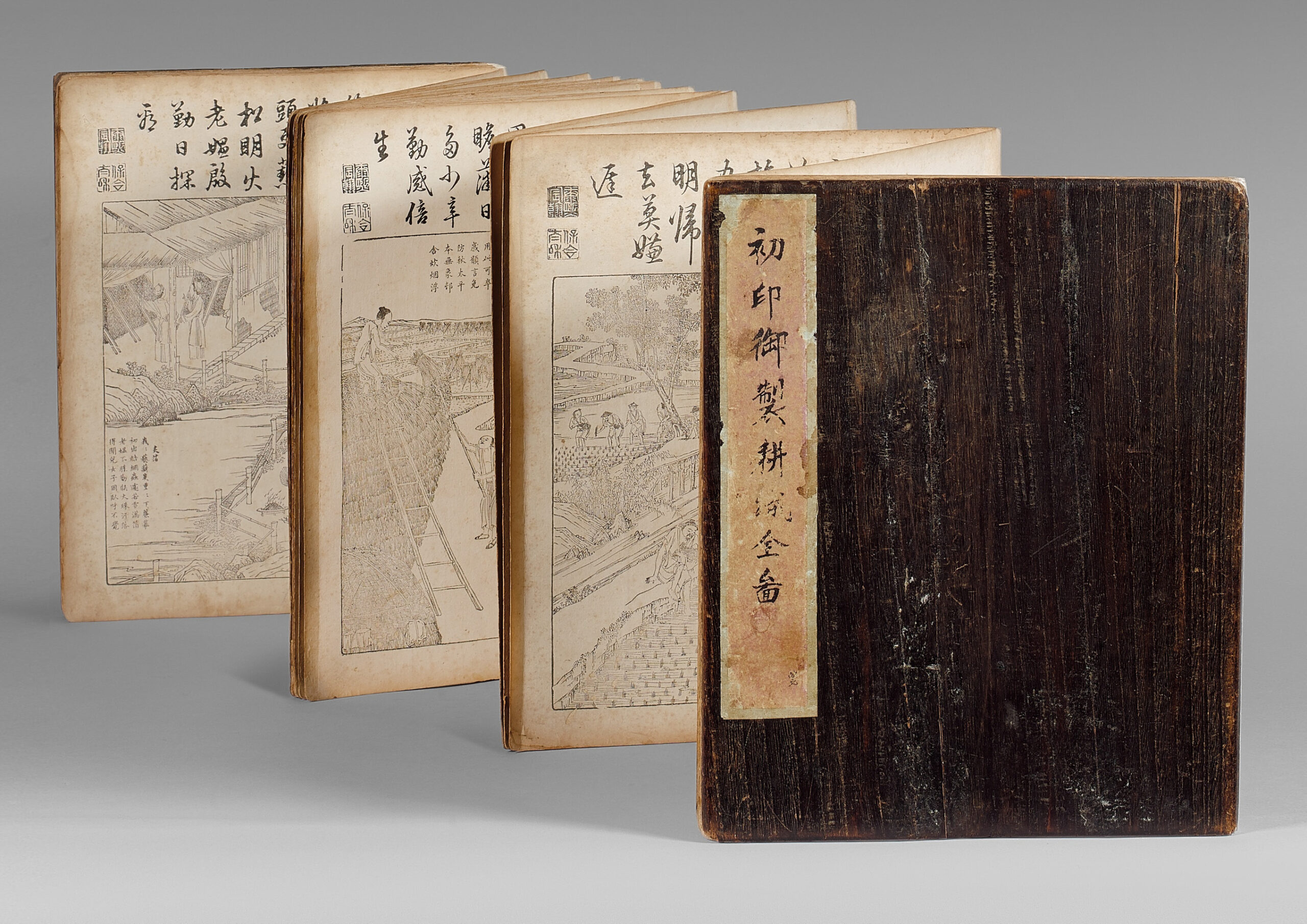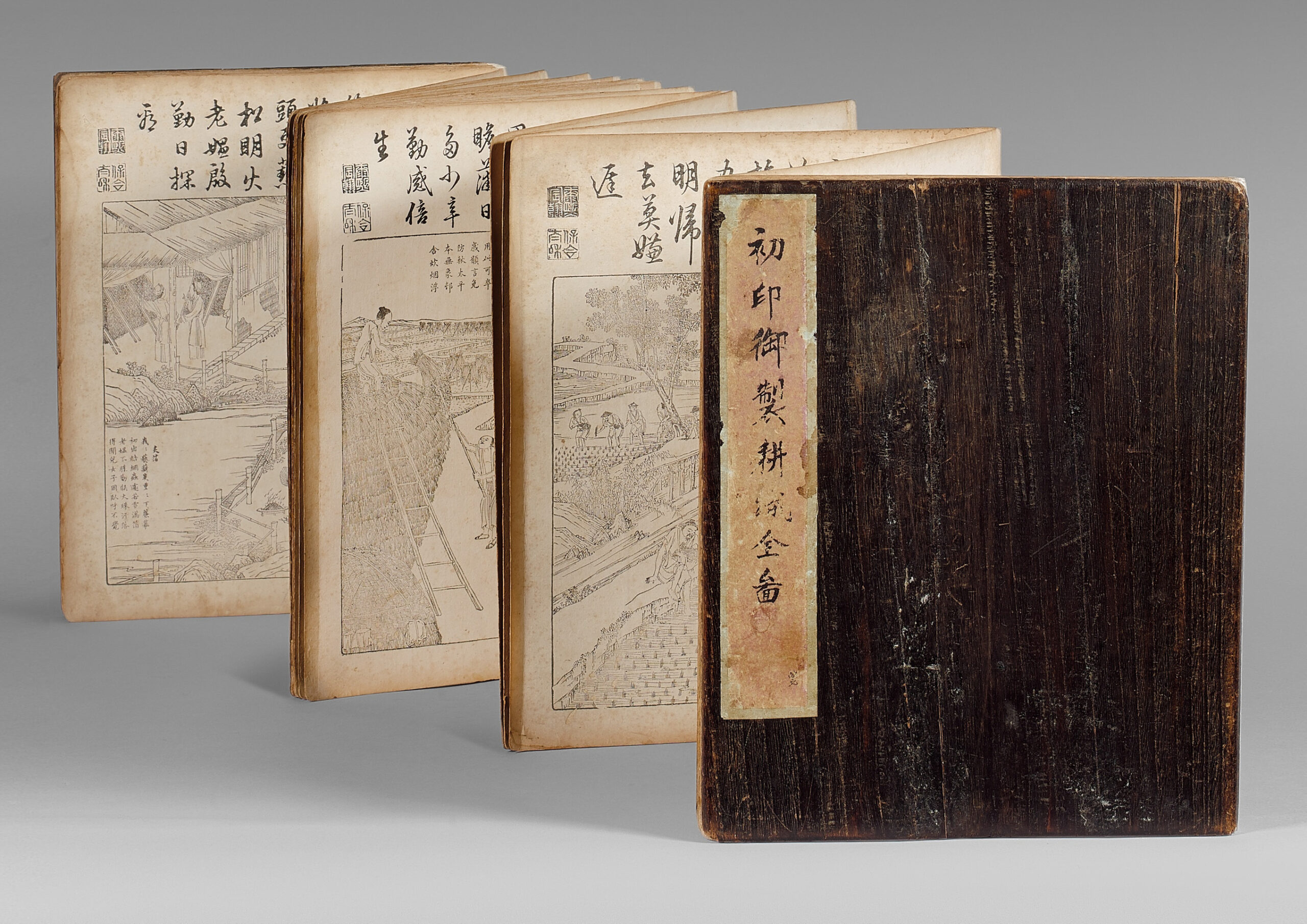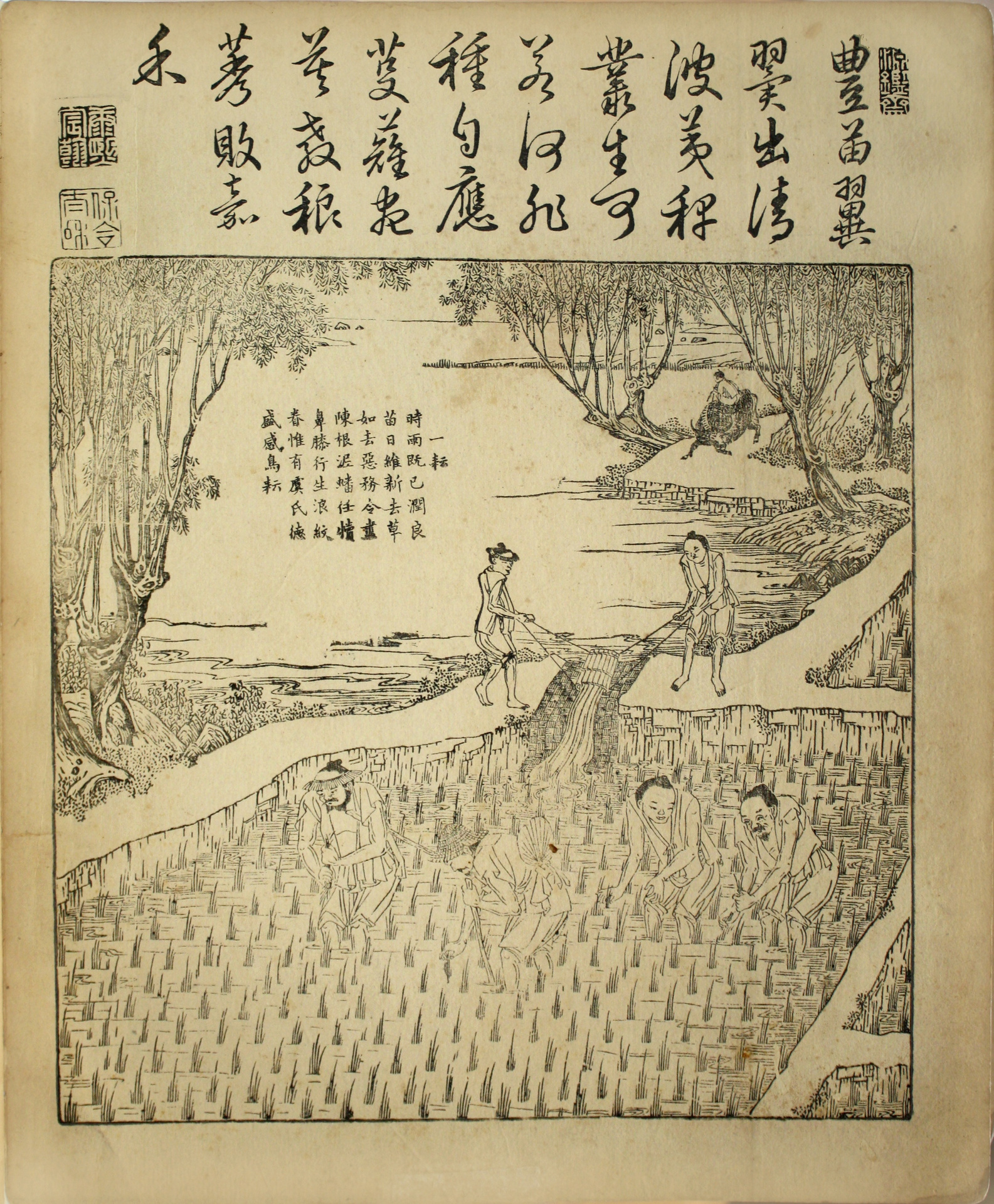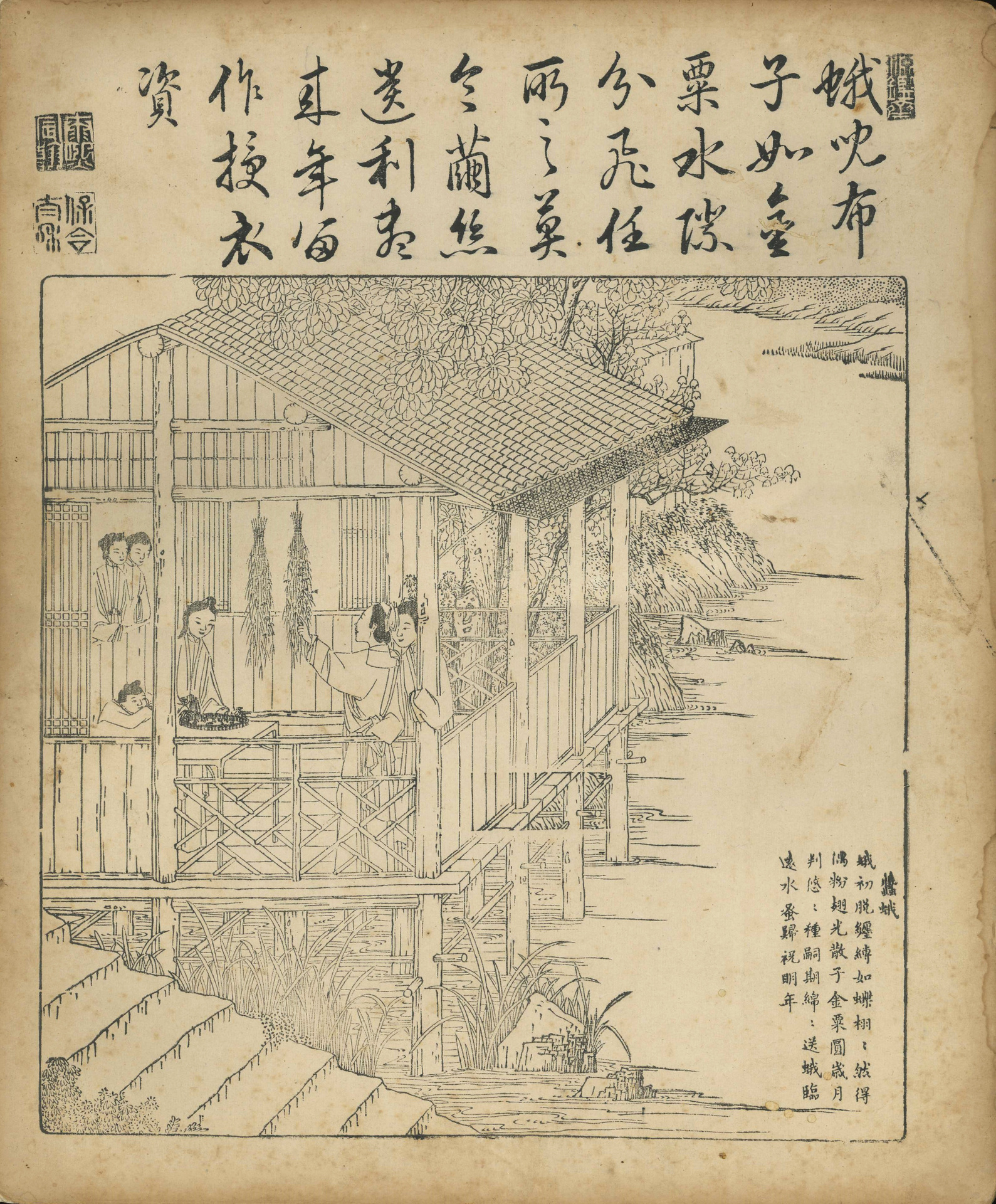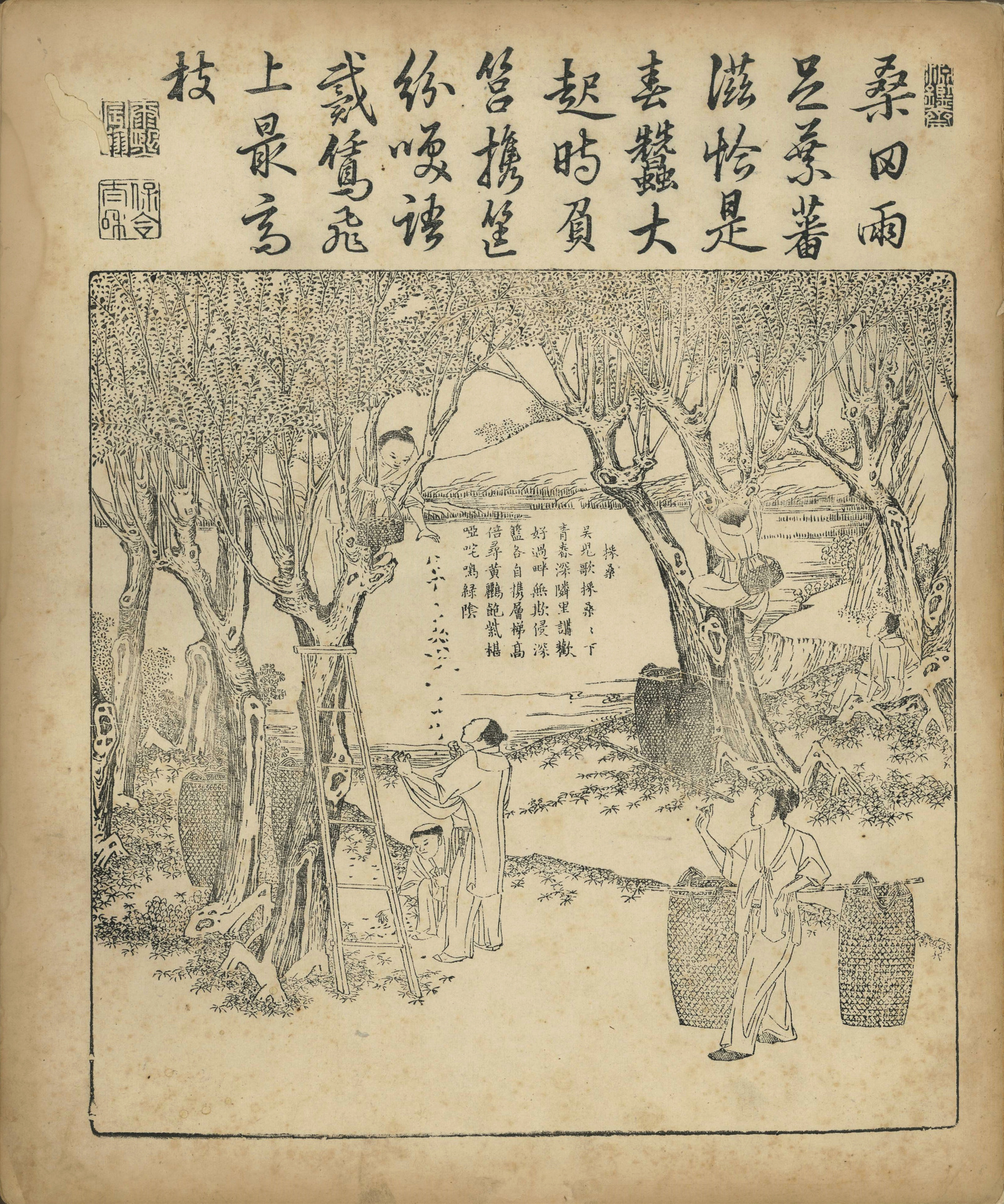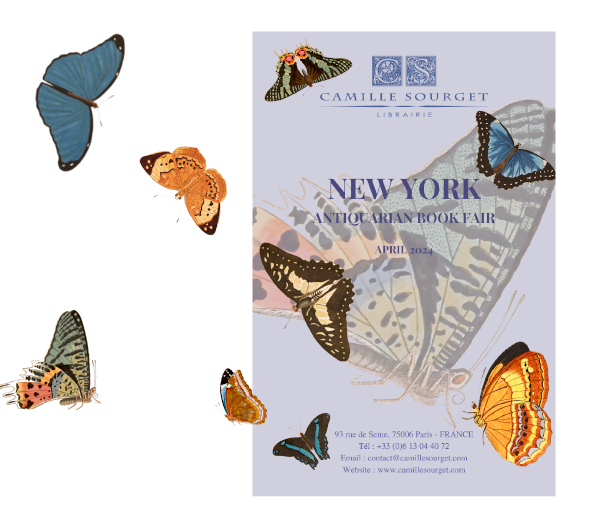Chine, Pékin, 1696.
Folio [348 x 282 mm] of (52) pp. Traces of a small worm track anciently restored. The whole is mounted as brochure “in the style of an accordion” (Leperello). Red stamp at the head of the volume.
The album is protected by two solid wooden boards. It is preserved in its rare 18th century binding, identical to the one in the National Library, Engravings Department. Paper lettering piece on the upper cover.
First edition of this album financed by the Chinese emperor Kangxi in 1696, enclosing his poems and his seals.
There were several issues of this first edition and the present copy doesn’t belong to the very first issue.
It is a major work in the Qing dynasty illustrated literature (1644-1912) that the erudite Yao Shi commented as follows: “May those who look at this album do not treat it lightly”.
The work presents 46 poems composed and calligraphed by the emperor of China, Kangxi 康熙. This emperor, a contemporary of Louis XIV, reigned from 1662 to 1722. He was a tolerant sovereign who let China open to the Buddhist and Christian influences by using the Jesuits mathematical, geographical and astronomical knowledge.
The album is composed of 46 large superb woodcuts (24 x 24 cm) that each illustrates the emperor’s poems. They represent country works and the everyday life of the Chinese peasants in the 17th century.
These engravings were made after silk paintings by Jiao Bingzhen.
After having financed the publication of this album gathering his poems, Kangxi ordained the engraving of faithful replicas on wood boards of the superb silk paintings by Jiao Bingzhen, 焦秉貞 (1689-1726), in order to distribute them printed.
At this time, sericulture wasn’t the most jealously kept secret technique anymore.
The original paintings on silk are today lost, and this work is a xylographic reproduction ordained by the emperor Kangxi in 1696.
The poems of the emperor, printed in the blank space above the engravings, were translated by Bernhard Fuehrer, famous sinologist at the London University.
The 46 illustrations are the followings:
First part: The agricultural work:
1. The soaking of the seeds; 2. The ploughing; 3. The harrowing; 4. The deep harrowing; 5. The evening out; 6. The sowing of the sprouts; 7. The rise of the young plants; 8. The fertilizing; 9. The extraction of the young plants; 10. The planting; 11. The first weeding; 12. The second weeding; 13. The third weeding; 14. The irrigation; 15. The harvest; 16. The stacking; 17. The threshing; 18. The poundings; 19. The riddling; 20. The winnowing; 21. The stacking; 22. The storing; 23. The offering to the spirits.
Second part: The silk work:
24. The bathing of the seeds; 25. The second sleep; 26. The third sleep; 27. The waking; 28. The spinning; 29. The repartition of the racks; 30. The picking of the mulberry tree’s leaves; 31. The lifting up on the litters; 32. The heating of the racks; 33. The splitting; 34. The sorting of the cocoons; 35. The burying of the cocoons; 36. The soaking of the silk; 37. The butterflies; 38. The thanking offering; 39. The weft; 40. The weaving; 41. The ‘travelage’; 42. The chain; 43. The dyeing; 44. The floral pattern weaving; 45. The cutting of silk; 46. The confection of clothes.
Precious copy of this superb work financed by the Chinese emperor in 1696, preserved in its rare 18th century binding made of two solid wooden boards.
We have been able to locate 3 copies of this rare work: at the B.n.F. (Engravings department), Oxford Library, Amsterdam.
